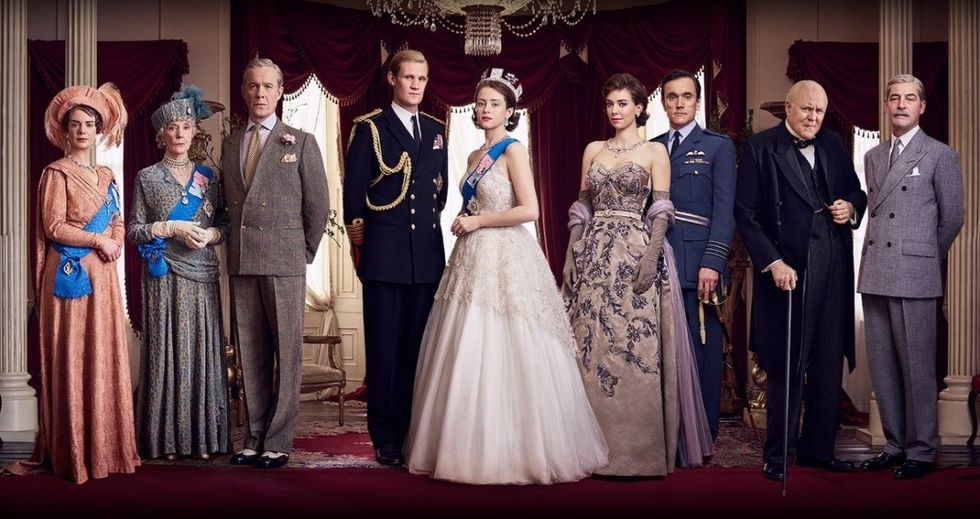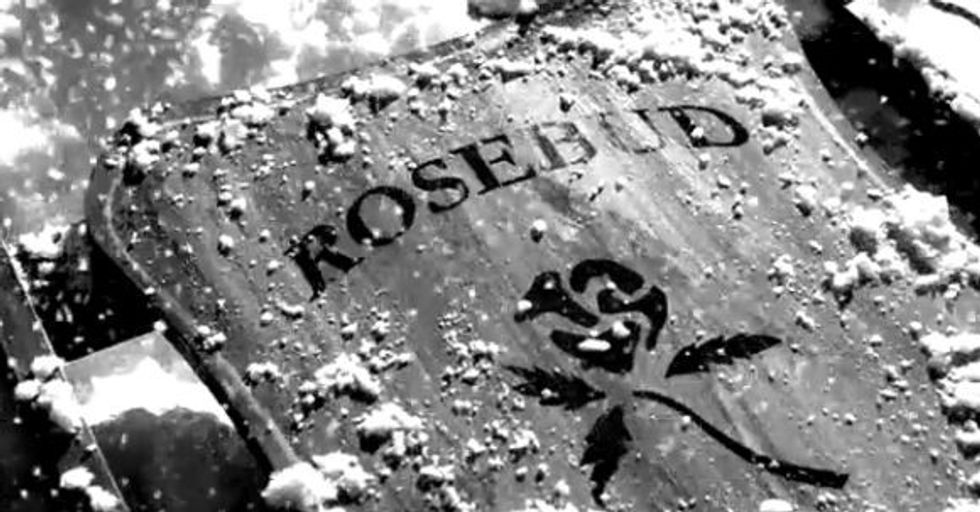What Is Metonymy? (Definition and Examples)
Screenwriting and symbolic language go hand in hand.

'Harry Potter and the Sorcerer's Stone'
In the realm of filmmaking, storytelling often transcends words and relies on visual and symbolic language to convey emotions, ideas, and themes. Lucky for us, we have literary devices that have been used for thousands of years to help us understand what we see and hear.
One powerful literary term frequently utilized in film is metonymy.
In this article, we will explore the definition of metonymy and provide examples of how it is used in the world of cinema, and show you how you can use it.
Ready? Let's dive in.
"What is Metonymy?": A Literary Guide for English Students and Teacherswww.youtube.com
Metonymy Definition
Metonymy is a figure of speech used in language and literature, where one word or phrase is substituted with another word or phrase that is closely related or associated with it.
This substitution is based on the idea that the two words share a strong connection, whether through proximity, common usage, or symbolic association.
Metonymy is often used for rhetorical effect, adding depth and nuance to language and communication.
Metonymy in Filmmaking
In filmmaking, metonymy often serves as a visual shorthand, allowing directors and screenwriters to convey complex ideas or themes with just a single image, prop, or action.
This is all pretty vague, so let's dial into a few examples.
Examples of Metonymy

'The Crown'
Credit: Netflix
I think it's always more useful to see a definition in action. So let's look at the idea of what metonymy really is within the world of film and TV.
- The Crown: In the hit TV series The Crown, the title itself is a metonym. Rather than depicting the actual crown worn by the British monarch, the show uses the idea of a crown to represent the entire monarchy, its power, and the weight of responsibility on the Queen. This simple choice of title encapsulates the central theme of the series.
- Citizen Kane: Orson Welles' masterpieceCitizen Kaneemploys metonymy to illustrate the rise and fall of its titular character, Charles Foster Kane. Rosebud is the word he utters, and we find out that it's a sled, but also his longing for childhood and innocence. An uncomplicated life. Rosebud becomes a powerful metonym for Kane's complex and tragic character.
- Pulp Fiction: In Quentin Tarantino's Pulp Fiction, the glowing briefcase serves as a metonym for something valuable and mysterious. The audience never learns the exact contents of the briefcase, but its golden glow and the characters' reactions to it create a sense of intrigue and importance. This metonym adds an air of mystique and symbolism to the narrative.
- The Godfather: Francis Ford Coppola'sThe Godfatheruses oranges as a recurring metonym throughout the film. Whenever oranges appear in a scene, they foreshadow impending danger or death. This subtle visual cue provides a sense of foreboding without the need for explicit dialogue or exposition. In the final movie, Michael holds and eats an orange as he slowly dies. Likewise, in the first movie, Don Corleone eats an orange with his grandson before he has a heart attack.
- Harry Potter Franchise: In the Harry Potter film series, the scar on Harry's forehead is a metonym for his connection to Lord Voldemort and the events that shaped his life. The scar visually represents the battle between good and evil that defines the entire series, making it a powerful symbol within the films.
Why Do Filmmakers Use Metonymy

'Citizen Kane'
Credit: Warner Bros.
So what are these things doing and standing in for? We've seen titles and backstories, but there's so much more they can do.
- Symbolism and Subtext: Metonymy allows filmmakers to imbue their work with symbolism and subtext. It provides a way to convey deeper meanings and themes without relying on explicit dialogue or exposition. Instead, these meanings are subtly woven into the visuals or actions within the film.
- Visuals: Film is primarily a visual medium, and metonymy is an efficient way to communicate ideas and emotions visually. By using a single object, gesture, or image, filmmakers can convey a complex concept or evoke specific emotions in the audience.
- Emotional Impact: Metonymy can create a strong emotional impact. When viewers recognize the symbolic connection between a metonym and a larger idea, it can elicit a powerful emotional response, drawing them deeper into the story.
- Cinematic Language: Just as filmmakers use camera angles, lighting, and editing techniques to communicate, metonymy becomes part of the cinematic language. It allows directors to communicate more effectively and efficiently within the constraints of the medium.
- Engagement and Interpretation: Metonymy engages the audience's imagination and encourages them to interpret the story actively. Viewers become involved in connecting the dots and inferring meanings, making the filmgoing experience more interactive and engaging.
- Memorability: Well-executed metonymy can make a film more memorable. When viewers associate a specific object or image with a character, theme, or pivotal moment in the story, it can linger in their minds long after the film has ended.
- Economy in Storytelling: Metonymy allows filmmakers to streamline their narratives and avoid unnecessary exposition. It's a concise and efficient way to convey information, freeing up screen time for other important elements of the story.
- Artistic Expression: Filmmaking is an art form, and metonymy is a tool that allows directors to express their creativity. It enables them to experiment with visual storytelling, add layers of meaning, and create unique cinematic experiences.
- Cultural and Historical Context: Metonymy can be culturally and historically significant. Certain objects or symbols may carry specific meanings or connotations that are familiar to the audience. By using metonymy rooted in cultural or historical context, filmmakers can tap into shared knowledge and emotions.
Metonymy is a valuable tool in the filmmaker's toolkit, allowing for nuanced storytelling and the conveyance of complex ideas through visual and symbolic language.
As you watch your favorite films, keep an eye out for metonymy at work, and you'll discover a whole new layer of storytelling magic behind the scenes.
Let me know what you think in the comments.











